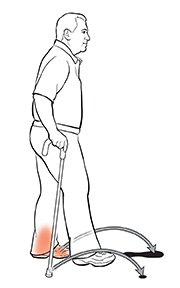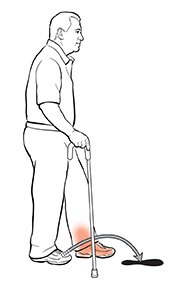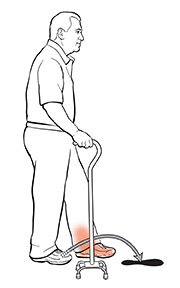Using a Cane
A cane helps you get around on your own. Many different canes are available. The most common type has a single tip. But if you have balance problems, your healthcare provider may recommend that you use a quad (four-point) cane. Always use your cane on the stronger (uninjured or unaffected) side, unless told otherwise. Use the cane on the side opposite your weaker leg.
Walking
1.

2.
-
Support your weight on both the cane and the affected leg.
-
Then step through with your stronger leg.
-
Put your weight on the weaker leg and start the next step.
-
When using a quad cane, place the cane so that all of the tips touch the ground.


Up stairs and curbs
-
If there is a railing, hold on to it with your free hand.
-
Step up with your stronger leg first.
-
Then move the cane and weaker leg together as a unit.
Online Medical Reviewer:
Daphne Pierce-Smith RN MSN
Online Medical Reviewer:
Thomas N Joseph MD
Online Medical Reviewer:
Trina Bellendir PT
Date Last Reviewed:
1/1/2022
© 2000-2024 The StayWell Company, LLC. All rights reserved. This information is not intended as a substitute for professional medical care. Always follow your healthcare professional's instructions.